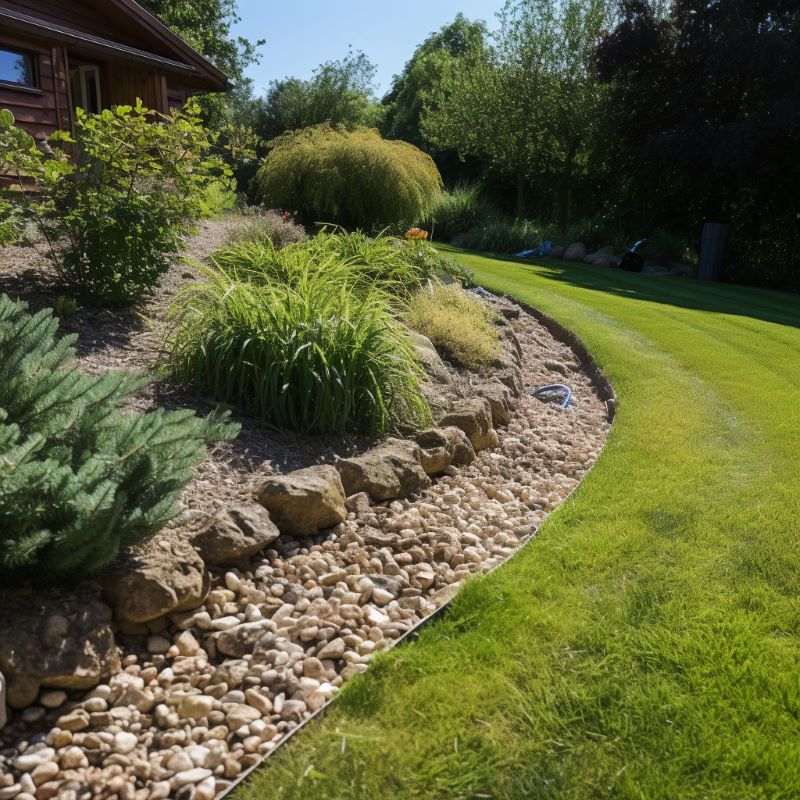Landscaping is a powerful way to boost the visual charm and market value of your home, but it necessitates meticulous planning to uphold the integrity of critical termite barriers. These protective measures are essential for shielding your property from destructive termite infestations. Unfortunately, certain landscaping choices and upkeep routines can unintentionally compromise these barriers, reducing their effectiveness. This comprehensive guide aims to equip you with essential strategies and insights to ensure that your landscaping decisions do not threaten your termite protection systems, while also safeguarding these vital defenses around your home. By being proactive, you can maintain a beautiful landscape and a termite-free environment.
The Essential Importance of Termite Barriers for Home Defense
Termite barriers are specialized protective systems, either physical or chemical, strategically implemented around or beneath your home to prevent termites from gaining access to your property. Every homeowner should prioritize the installation of a comprehensive termite management system, and understanding the specific type currently in place is crucial for effective property upkeep. A straightforward method to verify this is by checking the information located in your electrical meter box. These barriers play a pivotal role in safeguarding structures, especially in regions like Sydney’s Hills District, where termite activity is notably high, necessitating vigilant protection measures.
- Physical Barriers: Constructed from durable materials such as stainless steel mesh or graded stones, these barriers are installed beneath a building to effectively thwart termites from tunneling through and compromising the structure.
- Chemical Barriers: This method entails applying liquid termiticides to the soil surrounding a structure, establishing a treated zone that deters or eliminates termites from accessing your home, thus ensuring continued protection.

Recognizing Landscaping Practices That Compromise Termite Barriers
Numerous common landscaping practices can inadvertently damage or undermine the strength of termite barriers, leading to vulnerabilities that may result in severe infestations. Recognizing and understanding these practices is vital for maintaining effective protection against termites. By being aware of these potential pitfalls, homeowners can take proactive measures to safeguard their properties.
1. Planting Too Close to Your Home
When plants, shrubs, or trees are positioned too near your house, they can introduce a variety of issues:
- The roots may penetrate physical barriers or disrupt the treated soil in chemical barriers, significantly diminishing their effectiveness.
- Dense vegetation can retain moisture close to the building’s foundation, creating an inviting environment for termites to thrive and potentially leading to infestations.
2. Adding New Soil or Mulch
Introducing layers of soil or mulch near the foundation can create a bridge over chemical barriers, allowing termites to bypass these essential protections. Organic mulch is especially problematic as it can serve as both food and shelter for termites, making it a particularly attractive habitat for these pests.
3. Paving and Hardscaping Projects
The installation of paving, patios, or retaining walls in proximity to your property can disrupt existing termite barriers. The excavation and soil movement required for these projects might compromise the chemical seal or create gaps in physical barriers, consequently increasing vulnerabilities and making your home more susceptible to infestations.
4. Irrigation System Considerations
Poorly designed or excessively watered irrigation systems can saturate the soil surrounding your foundation. This not only dilutes the effectiveness of termiticides in chemical barriers but also fosters a favorable environment for termite proliferation, increasing the risk of infestations.

Implementing Landscaping Techniques to Protect Termite Barriers
1. Ensure Safe Clearance from Your Home
- Maintain a minimum distance of 50 cm between plants and trees and your home’s foundation, creating a safe buffer zone that protects against termite access.
- Choose smaller, non-invasive plants that are less likely to develop extensive root systems capable of interfering with your barriers, ensuring that your protective systems remain intact.
2. Choose Termite-Resistant Mulch Options
- Select inorganic mulches such as gravel or stone, or consider using termite-resistant materials like cedar or cypress chips to minimize risk and deter termite activity.
- Limit mulch piles to a maximum height of 5 cm and keep them at least 15 cm away from the foundation to reduce moisture retention and discourage termite attraction.
3. Avoid Disrupting the Barrier During Landscaping
- Consult with a professional before undertaking any digging or installation of landscaping features near your home to prevent disturbing the termite barriers or termite baits.
- If soil alterations are necessary, it’s advisable to have the barrier reinspected and potentially retreated to ensure ongoing protection against termites and maintain the integrity of your defenses.
4. Thoughtful Design Considerations
- Position irrigation systems away from the foundation to prevent excessive moisture accumulation near the barrier, which can attract termites and increase the risk of infestations.
- Install root barriers for larger trees to prevent roots from encroaching on the termite barrier and causing potential damage that could compromise the structure.
- Be mindful of termite reticulation pipes to avoid damaging them during landscaping activities, ensuring that your protection systems remain effective.
Urgent Steps to Take if Your Termite Barrier is Compromised
If landscaping activities or natural events have disturbed your termite barrier, taking immediate action is crucial to protect your home from potential infestations:
- Schedule a Professional Inspection: A thorough termite inspection is essential to identify vulnerabilities and determine whether termites have breached your protective barriers, allowing for prompt action to be taken.
- Reinforce Your Barrier: Based on the inspection results, physical barriers may require repairs, while chemical barriers might need retreatment or a top-up to restore their effectiveness and ensure continued protection.
- Implement Regular Monitoring: Routine inspections for termites are crucial to ensure that your barrier remains intact and your property stays protected from infestations, allowing you to catch potential issues early.
Strategic Landscaping Solutions to Strengthen Termite Protection
With careful planning and strategic design, your landscaping can effectively support your termite protection efforts and enhance your home’s defenses:
- Incorporate gravel paths or decorative stones along the foundation to create a dry zone that deters termite activity and minimizes moisture retention.
- Utilize raised garden beds with sufficient clearance from the house to minimize moisture accumulation near the foundation, helping to keep termites at bay.
- Regularly trim vegetation to ensure proper ventilation and decrease moisture buildup, creating an inhospitable environment for termites, thereby enhancing your home’s defenses.

Landscaping can be designed thoughtfully to enhance, rather than compromise, your termite barriers. By gaining a comprehensive understanding of how different landscape designs influence termite protection, you can create a beautiful and pest-free home environment. For expert termite advice or assistance with maintaining your barriers, reach out to our knowledgeable team today. Let us partner with you to secure your home while you create the landscape of your dreams, ensuring your property remains safe and attractive.
The Article: Termite Barriers for Effective Landscaping Solutions first appeared on https://writebuff.com.
The Article Termite Barriers: Essential Solutions for Landscaping Was Found On https://limitsofstrategy.com





Comments are closed